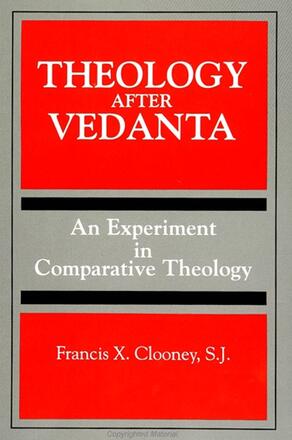Foreword
Acknowledgments
Chapter One:
Comparative Theology and the Practice of Advaita Vedanta
I. The Elements of the Experiment
II Comparative Theology
1. Calling Comparison "Theological"
2. Calling Theology "Comparative"
3. Comparative Theology in Relation to Other Disciplines
III. Comparative Theology as Practical Knowledge
IV. Advaita, Text and Commentary
1. A Brief Overview of the Advaita as a Commentarial Tradition
2. Advaita as Text: The Flourishing of a Commentarial Tradition
3. Advaita as Uttara Mimamsa: The Purva Mimamsa Paradigm
V. Practical Implications
1. Retrieving the Advaita "Text"
2. From the Study of Sankara to the Study of the Text
3. From Truth outside the Text to Truth after the Text
4. From Reader as Observer to Reader as Participant
Chapter Two:
The Texture of the Advaita Vedanta Text
I. The Texture of the Advaita Text
II. The Rough Texture of the Upanisads
III. The Organization of Upanisadic Knowledge in the UMS
1. Sutra
2. Adhikarana
a. Badarayana's Statement of the Problem regarding Taittiriya 2. 1-6a
b. Sankara's Two Interpretations of Taittiriya 2. 1-6a
c. The Later Commentarial Contribution to the Interpretation of Taittiriya 2. 1-6a
d. Is There a World outside the Text? The Case of World- Renunciation (UMS III. 4.18-20)
3. Weaving the Text Together: Samgati and Pada
a. Samgati: the Connections within a Pada
b. Textured Reasoning (nyaya)
c. Two Strategies of Coherent Practice
i. Coordination (upasamhara) in UMS III. 3
ii. Harmonization (samanvaya) in UMS I. 1
4. Adhyaya and the Organization of the Whole
IV. The Contextualization of Meaning through Engaged Reading
Chapter Three:
The Truth of Advaita Vedanta
I. The Problem of Truth in the Text
II. Strategies of Textual Truth
1. Denying to Brahman its Qualities (nirgunatva)
2. Paradoxes in the Text (mahavakyas)
III. Truth after the Text: The True Meaning of the Upanisads and the World of Advaita
1. UMS III. 3.11-13: Can We Assume that Brahman is Always Bliss?
2. UMS I. 1.5-11: The Upanisads Do Have a Right Meaning
3. UMS I. 1.2: Inference within the Margins of the Upanisads
4. UMS IV. 3.14 and the Systematization of Advaita
IV. Defending Brahman: The Fragmentation of the Other in the Text
1. UMS II. 1.4-11: The Relative Reasonableness of the Advaita Position
2. Arguing the Advaita Position: UMS II. 2.1-10
a. The Structure of UMS II. 2
b. The Refutation of Samkhya in UMS II. 2.1-10 and the Scriptural Reasoning of Advaita
V. Truth, Text and Reader
VI. A Concluding Note on Advaita and Intertextual Truth
Chapter Four:
Advaita Vedanta and Its Readers
I. The Tension between the Text and Its Truth
II. Timeless Truth, Timely Reading: The Truth in Reading
1. The Simplicity and Temporal Complexity of Liberative Knowledge
2. Two Analogies: Music and Yoga
III. Becoming a Reader
1. The Desire to Know Brahman and the Desire to Read
2. Authorizing the Reader: The Prerequisites of Knowledge
IV. The Constraints on Liberation and the Cessation of Reading in UMS III. 4: Description as Prescription
1. Expectations about the Person Who Will Renounce
2. The Ritual Background to Renunciation
3. Prescribing Renunciation
V. Advaita Elitism and the Possibility of the Unauthorized Reader: Finding a Loophole
Chapter Five:
Theology after Advaita Vedanta:
The Text, The Truth, and The Theologian
I. The Practice of Comparative Theology
II. The Composition of the Text for Comparative Theology: Reading the Summa Theologiae and the Uttara Mimamsa Sutras Together
1. Rereading Summa Theologiae I. 13. 4 after UMS III. 3.11-13
a. Setting the Comparison
b. Finding Similarities
c. Finding Differences
d. Some Strategiesfor the Practice of Reading Amalananda and Aquinas Together
i. Coordination (upasamhara): Rulesfor Using Texts Together
ii. Superimposition (adhyasa): The Superimposition of One Text on Another
iii. The Comparative Conversation
iv. The Comparative Tension: Metaphor, Epiphor and Diaphor
v. Collage: Visualizing the Margins of Comparison
2. Are There Incomparable Texts? The Example of ST III. 46. 3
3. The Fruits of Recomposing the Theological Text: Retrieving the Bible and the Commentaries on the Summa Theologiae
a. Retrieving the Citation of the Bible
b. Retrieving the Reading of Commentaries: Cardinal Cajetan on ST I. 13. 4
III. The Truth of Comparative Theology
1. The Patient Deferral of Issues of Truth
2. Truth and the Conflict of Truths in Light of the Textuality of Doctrine
3. The Truth of the Theology of Religions
4. The Truth about God
IV. The Education of the Comparative Theologian .
1. Texts as Teachers
2. The Education of the Comparativist: Competence, Motivation and Limits
3. The Comparativist as Educator
V. Finishing the Experiment
Notes
Selected Bibliography
Index
